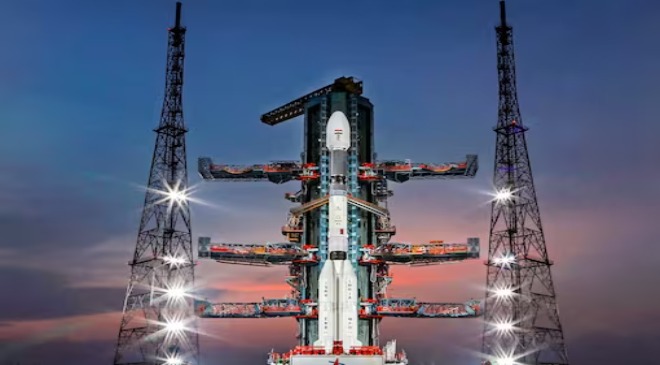Chandrayaan-3 landing date and time: The ISRO said that the soft landing of Chandrayaan-3 is a ‘monumental moment’ that not only fuels curiosity but also sparks a passion for exploration within the minds of our youth.
Chandrayaan-3 landing date and time: The Indian Space Research Organisation (ISRO) on Sunday announced that its Chandrayaan-3 mission is poised to achieve a soft landing on the surface of the Moon on August 23.
“This achievement marks a significant step forward for Indian Science, Engineering, Technology, and Industry, symbolising our nation’s progress in space exploration,” the Indian space agency said in an official statement.
Read More: WHO chief hails India for Universal Health Coverage, Ayushman Bharat Scheme
The ISRO said that the soft landing of Chandrayaan-3 is a ‘monumental moment’ that not only fuels curiosity but also sparks a passion for exploration within the minds of our youth.
“It generates a profound sense of pride and unity as we collectively celebrate the prowess of Indian science and technology. It will contribute to fostering an environment of scientific inquiry and innovation,” it added.
Chandrayaan-3 landing date and time
The ‘eagerly anticipated’ event will be broadcasted live on August 23, 2023, starting from 5:27 PM IST. The live coverage will be available via multiple platforms, including the ISRO’s official website, its official YouTube channel, its official Facebook page, and DD National TV channel.
The Indian space agency informed that the Chandrayaan-3 is set to land on the Moon on August 23, 2023, around 6:04 PM IST.
Read More: India Launches Ayush Visa To Promote Medical Tourism. Here’s Who All Can Apply
The ISRO also invited all schools and educational institutions nationwide to actively publicise this event among their students and faculty and organize the LIVE streaming of the Chandrayaan-3 soft landing within the premises.
Earlier in the day, the ISRO said it successfully reduced the orbit of the Chandrayaan-3 mission’s Lander Module (LM), further bringing it nearer to the moon. It informed that the LM would now undergo internal checks.
Post its launch on July 14, Chandrayaan-3 entered into the lunar orbit on August 5, following which orbit reduction manoeuvres were carried out on the satellite on August 6, 9, 14 and 16, ahead of the separation of both its modules on August 17.
Read More: Congress Reconstitutes CWC, Sachin Pilot And Shashi Tharoor Added To The Members List
Chandrayaan-3 mission objectives
The Chandrayaan-3 mission objectives are to demonstrate a safe and soft landing on the lunar surface, to demonstrate rover roving on the Moon, and to conduct in-situ scientific experiments.
If everything goes according to the plan, India will become the fourth country in the world after the United States, Russia, and China, to land on the moon, and will be the only nation to touch the lunar south pole.
It is notable that ISRO’s Chandrayaan-3 is a follow-on mission to Chandrayaan-2 to demonstrate end-to-end capability in safe landing and roving on the lunar surface.
The lunar south pole is of particular interest to scientists, who said that the permanently shadowed polar craters may contain water. The frozen water in the rocks could be transformed by future explorers into air and rocket fuel.
Russia’s Luna-25 crashes into the moon
Meanwhile, Russia’s robot lander the Luna-25 spacecraft crashed into the moon after it had spun into uncontrolled orbit, the country’s space agency Roscosmos said on Sunday.
“The apparatus moved into an unpredictable orbit and ceased to exist as a result of a collision with the surface of the moon,” the official statement from the agency read.
Roscosmos said it lost contact with the spacecraft on Saturday after it ran into trouble while preparing for its pre-landing orbit after reporting an ‘abnormal situation’ that its specialists were analysing.
“During the operation, an abnormal situation occurred on board the automatic station, which did not allow the maneuver to be performed with the specified parameters,” Roscosmos said.
The spacecraft was scheduled to land on the south pole of the moon on Monday, racing to land on Earth’s satellite ahead of India’s Chandrayaan.
The launch earlier this month was Russia’s first since 1976 when it was part of the Soviet Union.





































